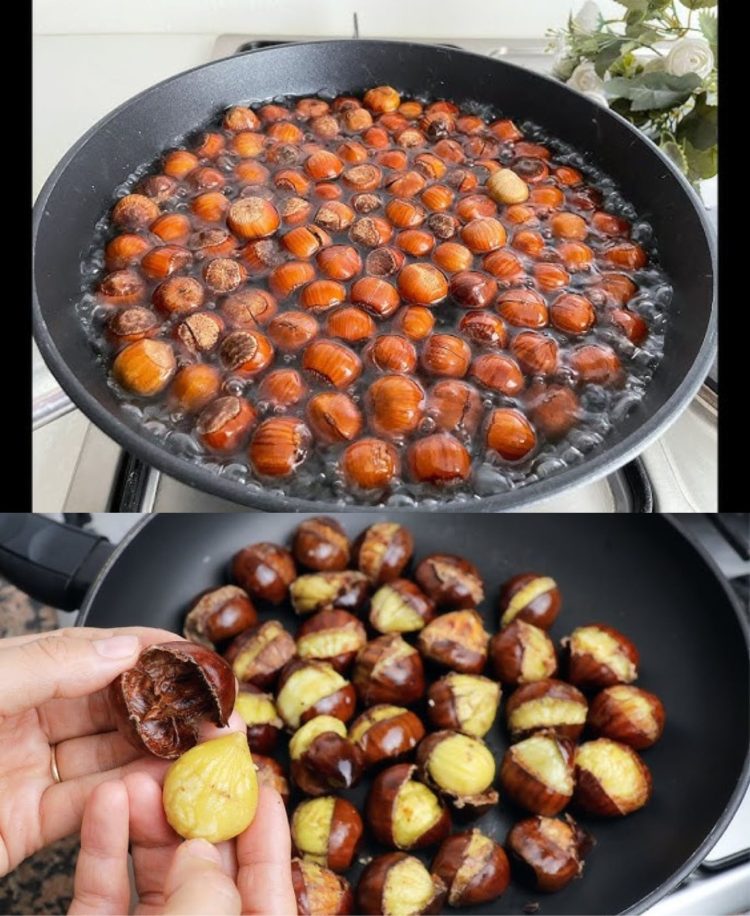- Peel the Chestnuts
Once the chestnuts have cooled slightly, it is time to peel them. If you have followed all the steps correctly, you will see that peeling them is quick and easy. The shell will come off easily, leaving the chestnuts ready to eat, tender and tasty.
How to Serve Boiled Chestnuts
Boiled chestnuts are delicious hot or cold and can be served in many different ways. They are perfect as a light snack or as an accompaniment to sweet or savory dishes. For an aromatic flavor, you can add a pinch of cinnamon; to enrich an autumn soup, boiled chestnuts are ideal.
Storing Boiled Chestnuts
If you have prepared more chestnuts than necessary, you can store them for a few days in the refrigerator in an airtight container to maintain their freshness. Before eating them, reheat them slightly in a bain-marie or in the oven to regain their original flavor.
The Benefits of Boiled Chestnuts vs. Roasted Chestnuts
Boiling chestnuts instead of roasting them is a quick and convenient way to enjoy this fall snack. Boiling requires no special equipment, cooks the chestnuts in a short time, and makes them easy to peel. Additionally, boiling chestnuts reduces the use of fat and preserves nutrients, making them a healthy alternative to traditional roasted chestnuts.
The Nutritional Benefits of Chestnuts
Chestnuts are rich in vitamins, especially vitamin C and B vitamins, and provide essential minerals.
